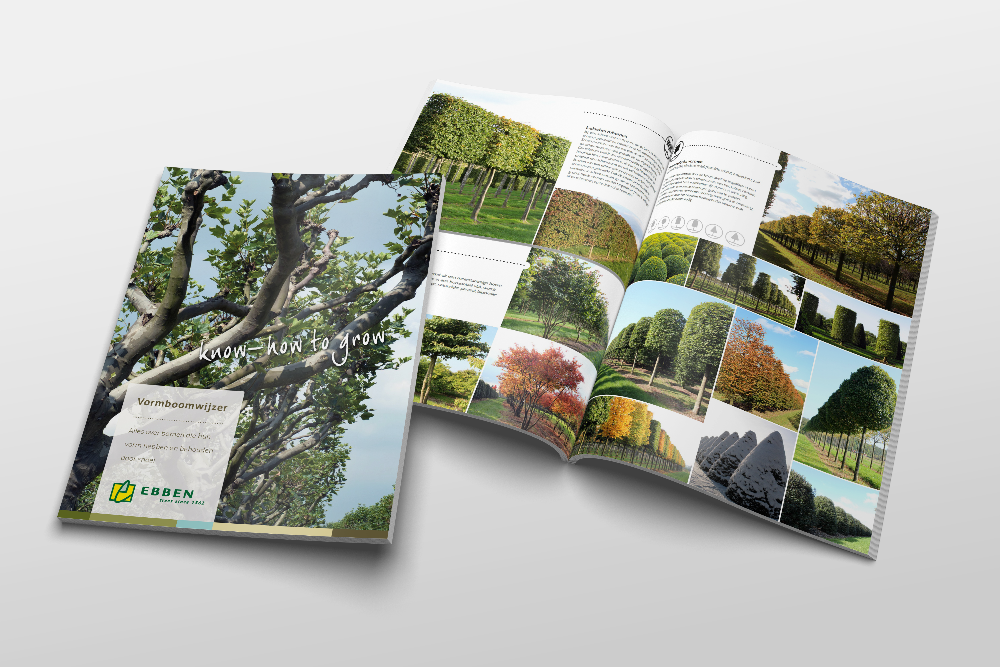Topiary: unique forms, countless possibilities

Topiary trees are unique objects that generally do not tend to get overly large but provide perfect solutions for all manner of greening requirements. Consider, for example, creating privacy in the garden or creating green volume without compromising on aspect. The right topiary tree in the right place lends structure to the surroundings and also a characteristic look. In this article, we explain how topiary trees are ‘made’, which different forms we can distinguish and for which specific applications topiary trees are especially attractive. Even in winter, topiary trees make strong architectural elements in the outdoor space and can act as a great contrast (juxtaposition) to wilder, informal plantings using ornamental grasses and perennials for example.
The secret behind the forms
Pruning is what gives topiary trees their form. Creating perfect forms is an art in itself. It all starts by carefully selecting the right tree. What matters is whether the branches are in the right place and whether the tree has sufficient vigour to meet stringent requirements in the future. In the winter the selected trees are moved to the covered tree area. This is where the actual shaping process starts. The trees are fitted with a frame made of bamboo canes. Every design and type of topiary tree has its own particular frame. Now comes the delicate work of weaving the frame in the tree. The tree’s natural existing branching structure is used as much as possible. All usable branches and twigs are fastened carefully to the frame, whilst the remaining branches are removed. This ensures the desired form and structure of the tree. Finally, the trees are re-positioned back in the ground. In the years that follow they need regular upkeep, and pruning at least once a year. Repeated rounds of pruning result in strengthening of the branching. The more frequent the pruning, the denser and more compact the result.
Every form is unique
Spherical, cylindrical, pyramidal, block, pleached or roof-trained; topiary trees are available in all species and forms. In the nursery we distinguish between the following forms:
Numerous forms are available, with and without stem, in any desired crown size. Because of their artificial form topiary trees must be maintained by means of pruning or shearing. If you opt for an older topiary tree, you have the advantage of only having to carry out some maintenance pruning. The framework construction is no longer needed and supportive pruning has already been carried out previously. A normal supporting structure is sufficient for older espaliers/trained trees.
Common trees – special forms
The ‘common’ trees we constrain into ‘unusual’ forms by pruning deserve particular attention. Where in the past Platanus (plane) and Tilia (lime) in particular were considered for topiarising, we now find that many species make suitable options. Consider for example the multi-stem plane as a roof-trained form. Good options also include Carpinus betulus (common hornbeam), Parrotia persica (Persian ironwood), the white mulberry (Morus alba), Prunus dulcis (almond) and Pyrus (pear). To name just a few.
Privacy and biodiversity
In the past topiary trees had a specific function. They were used to mark land boundaries, for shade or cover. But they were also status symbols and a great deal of time and energy was devoted to them over many years, and also symbolise man’s power over nature. These days, specifically other characteristics, such as tightness of form, atmospheric and eye-catching qualities and the character of the tree are what make topiary trees popular. Topiary trees are compact and, therefore, require no more space than you wish to provide. The crown volume is generally modest in size, which means that the root volume too is not so great. This makes them ideal for using in large and small gardens, on a terrace, along avenues, in parks and in public spaces. In a garden setting topiary trees provide privacy because they block out the view into the garden. At the same time, topiary trees create green volume without residents having to sit in the garden in the shade or compromising on aspect. On a terrace the roof-trained form often provides the desired shade. The many tight forms are ideal in both traditional and modern garden settings. In public spaces where space underground is limited, topiary trees can often provide the solution.
In outdoor spaces, topiary trees provide structure. Topiary trees provide a sense of cohesion and command attention year-round. Where space is limited, topiary trees provide a green environment and nesting opportunities for birds, insects and other small animals.















